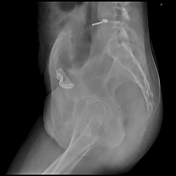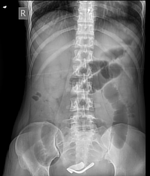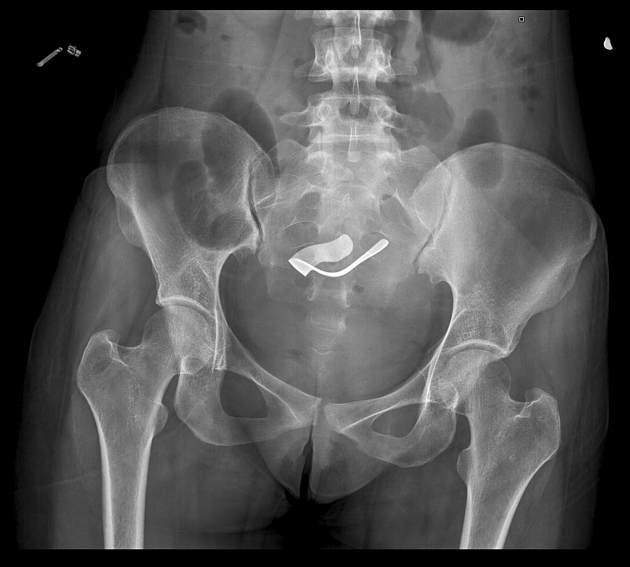Presentation
Young female with lower abdominal pain and pyrexia, 1-month post-cesarian section surgery.
Patient Data
Age: 25 years
Gender: Female
From the case:
Gossypiboma



Download
Info

Abdominal X-ray demonstrates irregular linear high-density mass in the pelvic area.
From the case:
Gossypiboma
Download
Info

Large retained surgical sponge missed after previous operation.
Case Discussion
Gossypiboma is the technical term for a surgical sponge accidentally left inside a patient's body. It is derived from the Latin word "gossypinus" meaning cotton plant and the Swahili "boma". Generally, the number of occurrences is between 3000 and 5000 cases a year. It is identified on plain radiography by noting their radiopaque marker strip.




 Unable to process the form. Check for errors and try again.
Unable to process the form. Check for errors and try again.